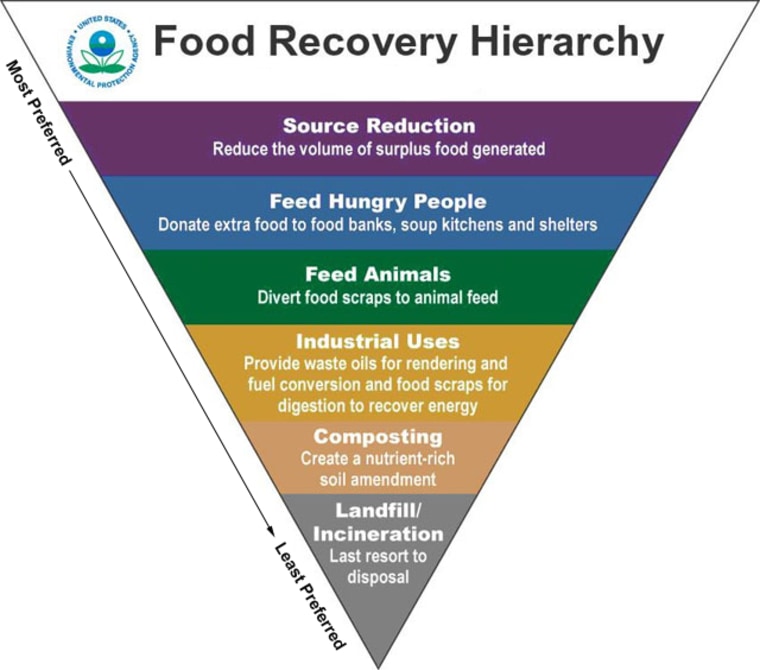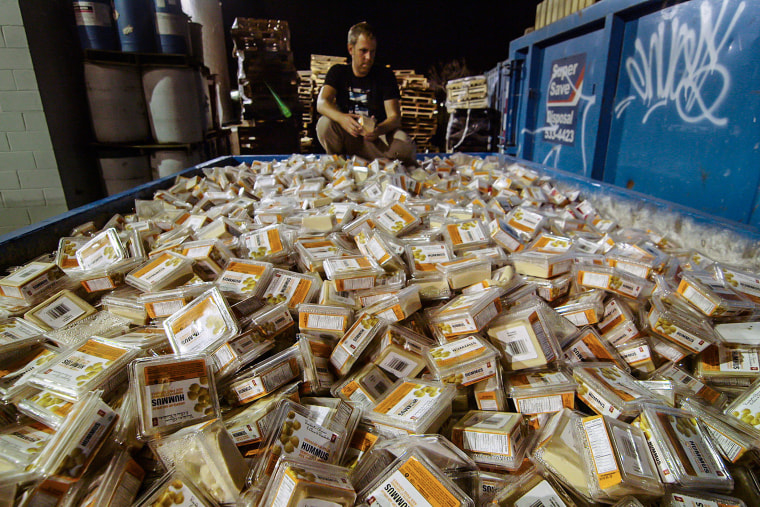“Use less, waste less” is usually the way the saying goes. That works with water, energy, paper and plastic where the goal is to cut down on consumption. With food however, the thinking goes something like, “use more, waste less.” The fact is, nearly half of the edible food in the United States is uneaten and ends up in landfills. That is costly not only in terms of money, but also natural resources. It takes water to produce food, energy to get the products to market and more energy still to truck unused food as trash.
Landfills are responsible for 16% of methane emissions, according to the Environmental Protection Agency. Mathy Stanislaus, Assistant Administrator for the EPA’s Office of Solid Waste and Emergency Response says, “methane is the most potent greenhouse gas, which is 25 times more potent than carbon dioxide. And food is the major contributor to landfills.” That’s where the EPA’s Food Recovery Challenge comes in. It began in 2011 as a way to encourage businesses and organizations to reduce the environmental impact of materials at all stages of their “life cycle.”
“Businesses that take part in the challenge have to set a goal, conduct an audit with management practices and reduce and reuse as much as possible and then divert to food banks. Nearly two million tons of food has been recovered so far in this challenge,” says Stanislaus.
To date there are 845 businesses participating in the challenge that include grocers, universities, stadiums and those in the hospitality industry. Stanislaus says there has been a very positive reaction, “I think that people really see the opportunity here. You know it’s the triple win – social win, environmental win and the pocketbook win.”
What does this all mean for you as a consumer and how can you integrate these practices into your family or business?
Source Reduction – Reduce the volume of food waste generated
Obviously the largest issue and most preferred solution to the food waste problem is to reduce the problem at its source. What exactly does source reduction mean? Journalist and food waste expert Jonathan Bloom explains, “Source reduction just means waste less food. So stop creating so much excess food. How do consumers do that? We have to change our ways -- Behavior change is the real key.” Bloom continues, “Not buying too much food -- we don't use about 25% of what we bring home. Plan meals to know what to buy and then stick to your list in the store.”
Feed People – Food donations redirect valuable resources to "feed people, not landfills"
Food pantries, food banks, and food rescue programs are available across the country to redistribute food to those in need. Look for local programs in your neighborhood. Not only will you save on disposal costs, but you will also get tax deductions and liability protection under the Good Samaritan Act.
Feed Animals – Provide food to farmers
Seek out opportunities to donate food to local farmers or zoos to be used as animal feed.
Industrial Uses – Provide fats for rendering and food discards for animal feed production
Based on the availability of location and facilities, organizations can look for opportunities to collect spent fats, oils and greases from food for eventual use as supplemental fuel in some combustion units. Food scraps also can be turned into renewable energy and organic fertilizers through anaerobic digestion.
Composting – Convert food scraps into a nutrient rich soil amendment
Composting has its merits, but it is a low priority on the hierarchy. It is preferable over disposal, landfill or incineration, which are last resorts. Food waste is easy to collect in a backyard compost collector or dropped off at local community program.

